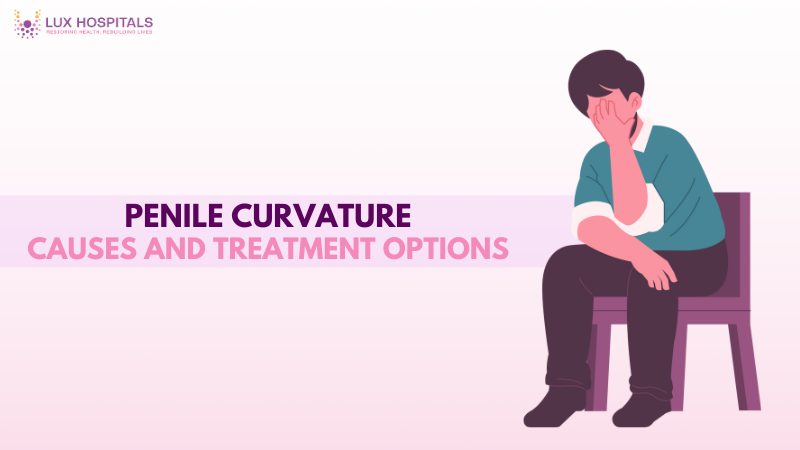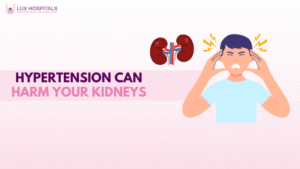Understanding Penile Curvature, Causes & Treatment

An irregular curvature of the penis during an erection is known as penile curvature. A slight bend is normal and usually innocuous. Still, a large or uncomfortable bend could signify something more serious. Understanding the reasons for penile curvature and researching potential treatments are essential for achieving the best possible sexual health and quality of life.
What Is Penile Curvature?
Penile curvature refers to a noticeable bend in the penis, particularly during an erection. A slight curve is natural in most men and doesn’t cause discomfort. However, when the curvature is severe or accompanied by pain, it may be associated with conditions like Peyronie’s disease, congenital curvature, or trauma.
Types of Penile Curvature
Penile curvature comes in two main varieties:
1. congenital Penile curvature
- Present from birth.
- The uneven development of the penile tissue causes it.
- Typically noticed during puberty when erections begin.
2. Acquired Penile Curvature (Peyronie’s Disease)
- It develops later in life, often between the ages of 40 and 60.
- It is caused by fibrous scar tissue (plaques) in the penile shaft.
- It may worsen over time and affect sexual function.
Causes of Penile Curvature
Several factors can lead to penile curvature, especially the acquired type. Being aware of these factors can aid in early diagnosis and
Common Causes Include:
- Trauma or injury during sex or physical activity.
- Peyronie’s disease, where fibrous scar tissue causes curvature.
- Connective tissue disorders like Dupuytren’s contracture.
- Genetic predisposition to abnormal wound healing.
- Surgical complications from procedures on the penis or prostate.
Symptoms Associated with Penile Curvature
Men experiencing penile curvature may notice:
- A bend or kink in the penis during erection.
- Pain during erection or intercourse.
- Erectile dysfunction or difficulty with penetration.
- Palpable hard lumps or plaques in the penis.
- Shortening of the penile length.
Not all symptoms are present in every case, and severity varies by individual.
Diagnosis of Penile Curvature
Diagnosis involves a physical exam and patient history. In some cases, imaging techniques help determine the severity and underlying cause.
Diagnostic Methods:
- Physical examination during erection (induced or via photos).
- Ultrasound to identify scar tissue or calcification.
- Medical history to assess trauma or family conditions.
- Penile duplex Doppler ultrasound to evaluate blood flow and plaques.
Better results are assured by early diagnosis, which may also lessen the need for surgery.
Options for Penile Curvature Treatment
The degree, cause, and severity of functional impairment determine how to prevent complications and achieve results. Some mild cases can be managed with drugs or surgery, while others cannot.
Non-Surgical Treatments:
- Oral medications (e.g., vitamin E, potassium para-aminobenzoate).
- Injection therapy (e.g., collagenase Clostridium histolyticum).
- Penile traction therapy uses devices to straighten the penis gradually.
- Vacuum erection devices for blood flow enhancement and stretch.
Surgical Options:
- Plication surgery, which involves cutting the penis’s longer side shorter.
- Grafting (removing scar tissue and inserting a graft).
- Penile implants (for men with erectile dysfunction and severe curvature).
Surgery is generally recommended for severe cases or when non-surgical treatments have failed.
Living with Penile Curvature
Living with penile curvature can affect a man’s self-esteem, relationships, and mental health. Understanding the reasons for penile curvature and researching potential treatments are essential for achieving the best possible sexual health and quality of life.
Tips for Coping:
- Talk to your lover honestly.
- Seek support groups or counseling.
- Follow up regularly with a urologist.
- Educate yourself about treatment options.
- Don’t ignore psychological distress—mental health is key.
Complications of Untreated Penile Curvature
Ignoring penile curvature can lead to several complications:
- Chronic pain during erections.
- Erectile dysfunction.
- Inability to have penetrative sex.
- Reduced self-esteem or relationship strain.
- Progressive worsening of curvature.
Timely medical advice helps prevent complications and improve outcomes.
Prevention and Early Management
Although it is impossible to avoid hereditary penile curvature, various precautions can reduce acquired forms, particularly those brought on by trauma.
Preventive Measures:
- Avoid rough or high-pressure sexual activity.
- Seek medical attention for any penile injury.
- Manage underlying conditions like diabetes or hypertension.
- Perform regular check-ups if you notice any penile changes.
Early treatment leads to more effective results and a better quality of life.
Conclusion
The condition known as penile curvature can significantly affect a man’s physical and emotional well-being. While some curvature is normal, excessive or painful bending requires medical attention. With advancements in treatments both surgical and non-surgical—many men can achieve improvement and regain confidence in their sexual health. Don’t hesitate to consult a urologist if you’re experiencing any signs of penile curvature. Early diagnosis and action can prevent complications and improve results, improving overall quality of life.
Frequently Asked Questions
Penile curvature in adults is most commonly caused by Peyronie's disease, which results from scar tissue forming in the penile shaft. This can happen after trauma or injury to the penis. Other contributing factors include genetics and connective tissue disorders.
A slight bend in the penis is completely normal and usually not a cause for concern. However, if the curvature is severe, painful, or interferes with sexual function, it may require medical evaluation. Significant curves may indicate an underlying condition like Peyronie's disease.
Yes, mild to moderate cases of penile curvature can often be treated with medications, traction therapy, or injections. Non-surgical treatments are especially effective in the early stages. However, advanced cases may still require surgical correction.
If the curvature causes pain, difficulty with sexual intercourse, or emotional distress, a medical evaluation is recommended. A urologist can assess the severity and suggest the most suitable treatment. Not all cases require immediate intervention.
In most cases, penile curvature does not directly impact fertility. Conception may be indirectly hampered, though, if the curvature is so significant that it prohibits sexual activity. Fertility can frequently be maintained or recovered with the proper care.




















